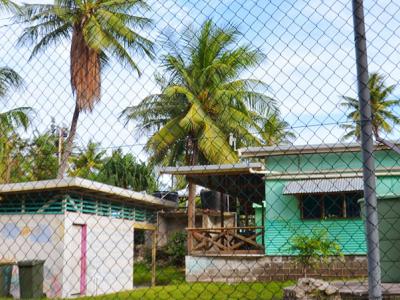It is evident that because Nauru is a single small island, the effects of climate and sea-level change will be highly inter-related and conditioned by the environmental and social changes that occur in the future. This, combined with the uncertainties relating to present sensitivities and climate and sea-level change scenarios for Nauru, as well as the uncertainties in determining cumulative and integrated effects, suggests that the best adaptation strategy in Nauru would be a 'no-regrets' approach. The adaptation strategies for Nauru include, but are not limited to, the following objectives: Land rehabilitation and protection; Strengthening environmental education; Strengthening environmental institutions and legislation; Conservation of biodiversity; Promotion of the sustainable use of marine resources; Pollution and waste management; Control of population and urban growth; and Appropriate infrastructural development.
Nauru is an isolated, uplifted limestone island located in the South Pacific approximately 2,900 kilometres northeast from Australia. The total land area of Nauru is only 22 km2 (2200 ha). The island is surrounded by a fringing coral reef between 120 and 300 metres wide. The reef drops away sharply on the seaward edge, at an angle of about 40o, to a depth of about 4000 metres. The land area consists of a narrow coastal plain or "Bottomside", ranging from 100 to 300 metres wide, which encircles a limestone escarpment rising some 30 metres to a central plateau, known locally as "Topside". Historically, phosphate was the primary economic resource in Nauru, and the country boosted of having one of the highest rates of Gross Domestic Product per capita. However, these stores were thought to be nearly depleted and the end of phosphate mining left a legacy of environmental degradation and unemployment. The country is now mostly dependent on foreign aid and food imports from Australia and other countries.


